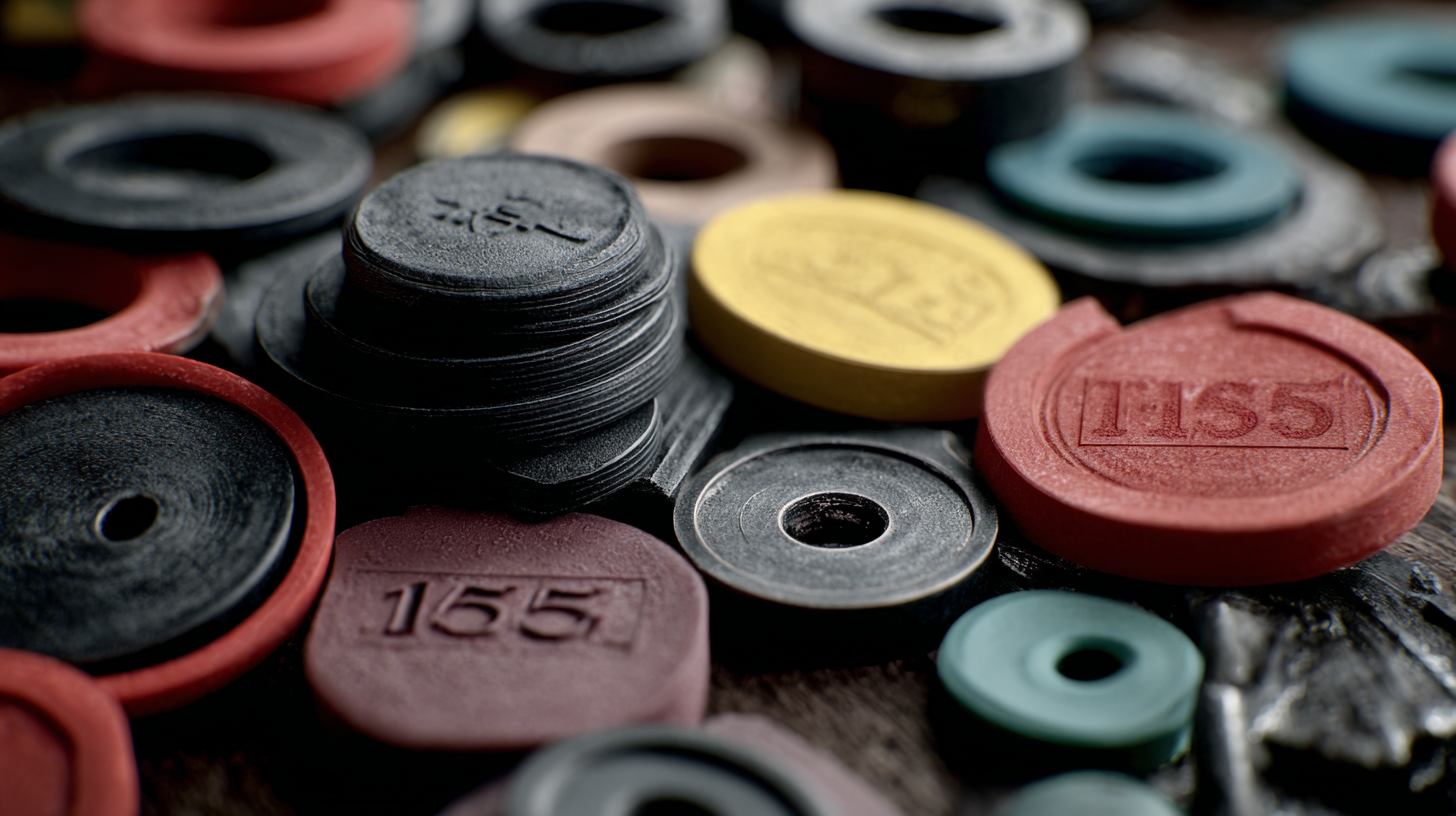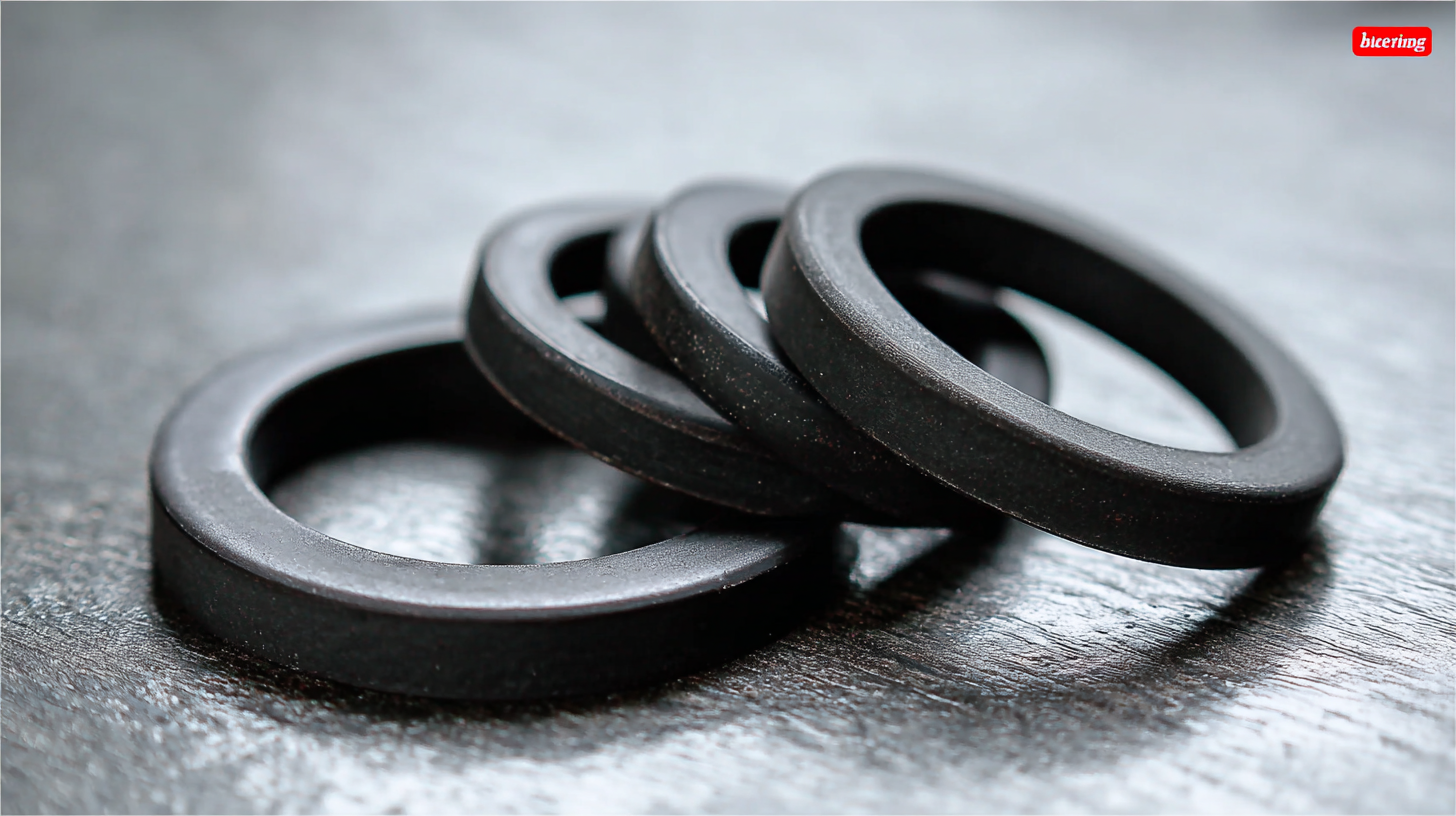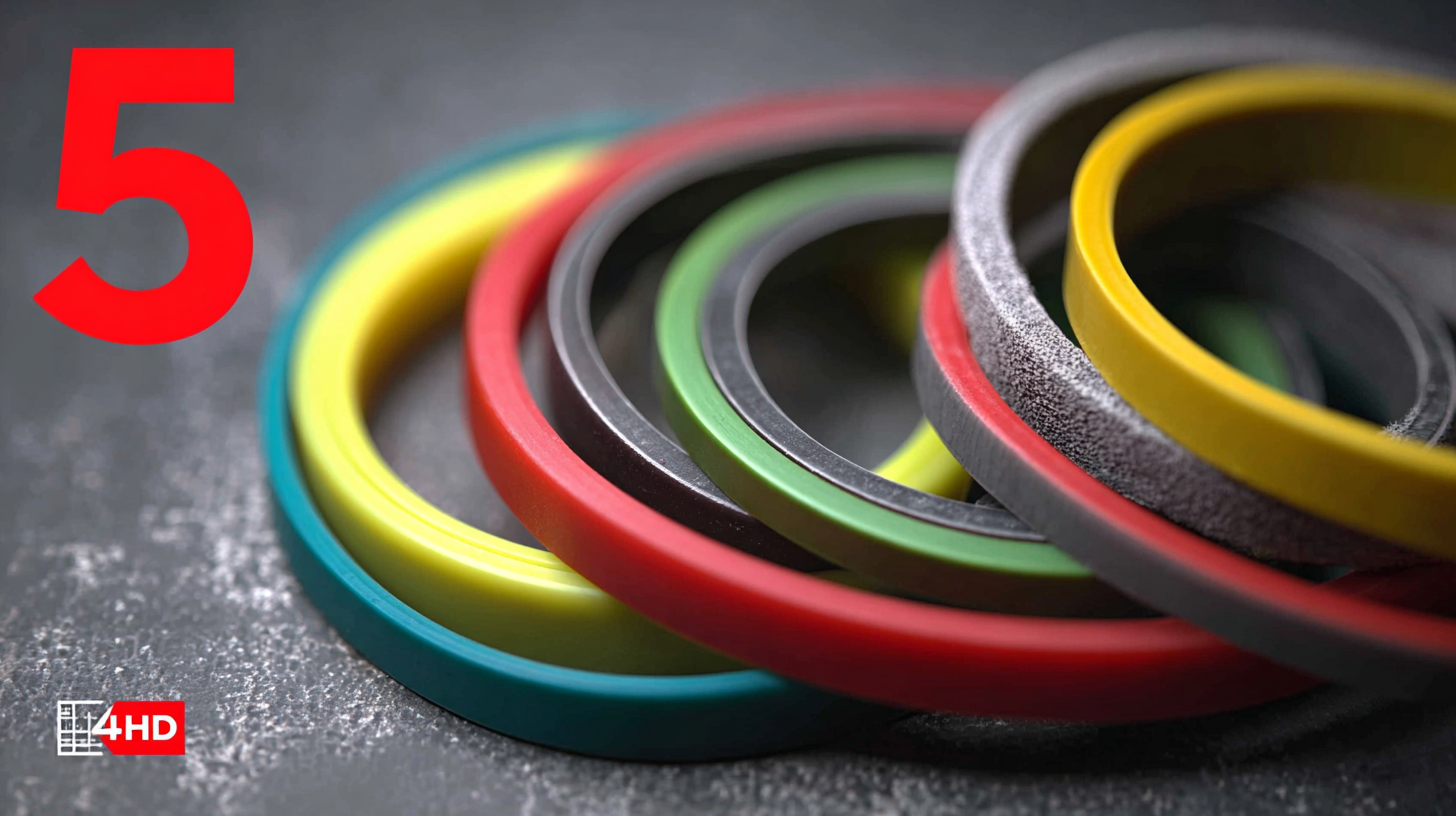


In the world of engineering and manufacturing, the choice of materials plays a pivotal role in ensuring the longevity and performance of products. Rubber gasket materials, in particular, are essential for providing effective seals in various applications including automotive, aerospace, and industrial machinery.

According to a report by MarketsandMarkets, the global gasket market is projected to reach USD 5.1 billion by 2025, driven by increasing demand for rubber gasket material across multiple sectors. The versatility, resilience, and cost-effectiveness of rubber gaskets make them a preferred choice for designers and engineers aiming to enhance product durability.
In this blog post, we will explore the top five rubber gasket materials, delving into their unique properties and ideal applications to help you unlock the crucial advantages they offer.
Rubber gaskets are indispensable components in many industrial applications, providing a reliable seal that prevents leaks and contamination. The flexibility and resilience of rubber materials allow gaskets to adapt to various surface imperfections, ensuring a tight fit even under changing temperatures and pressures. This adaptability makes rubber gaskets a preferred choice for industries ranging from automotive to food processing, where maintaining integrity and hygiene is paramount.
Another significant benefit of using rubber gaskets in industrial settings is their resistance to a wide range of chemicals and environmental factors. Many rubber types are formulated to withstand aggressive substances, including oils, solvents, and acids, thereby prolonging the lifespan of machinery and reducing maintenance costs. Additionally, their ability to absorb vibrations helps in minimizing wear and tear on equipment, further enhancing operational efficiency. Overall, investing in high-quality rubber gaskets can lead to improved performance and reliability in various industrial applications.

When selecting rubber gasket materials for various applications, understanding their environmental resistance is crucial for ensuring longevity and functionality. Among the top materials, Nitrile (Buna-N) gaskets exhibit excellent resistance to oils and fuels, making them a preferred choice in automotive and industrial machinery. According to a report by the Rubber Manufacturers Association, Nitrile rubber can withstand temperatures ranging from -40°F to 250°F (-40°C to 121°C), providing versatility in various harsh environments.

Silicone gaskets, on the other hand, shine in high-temperature applications due to their remarkable resilience. The American Society for Testing and Materials (ASTM) highlights that silicone can maintain its properties at temperatures as high as 500°F (260°C). Moreover, its stability against UV exposure and ozone makes it ideal for outdoor applications where longevity is essential.
For applications requiring chemical resistance, EPDM (Ethylene Propylene Diene Monomer) gaskets stand out, as they resist heat, oxidation, and UV radiation, according to a recent study published in the Journal of Elastomers and Plastics, emphasizing their superiority in environments demanding durability against environmental stressors.
By selecting the appropriate rubber gasket material based on environmental resistance, industries can significantly enhance equipment reliability and reduce maintenance costs in the long run.
Rubber gaskets are critical components in various applications, significantly enhancing the longevity and reliability of equipment. By providing effective sealing solutions, they prevent leaks, reduce wear and tear, and protect internal components from external contaminants. This capabilities contribute to the overall performance and efficiency of machinery in industries such as automotive, aerospace, and oil and gas. As these sectors continue to grow and evolve, the demand for durable and reliable gaskets only increases, underscoring the importance of choosing the right materials for specific needs.
The versatility of rubber gasket materials makes them suitable for a range of environments, from high-pressure applications to those involving extreme temperatures. Innovations in gasket technology, such as advancements in sealing solutions, have led to the development of high-performance products that can withstand harsher conditions while ensuring a tighter seal. As companies seek to extend the life cycle of their equipment, the role of rubber gaskets becomes even more paramount in maintaining operational efficiency and reducing maintenance costs.
| Material Type | Temperature Resistance (°C) | Chemical Resistance | Applications | Durability Rating (1-10) |
|---|---|---|---|---|
| Nitrile (Buna-N) | -40 to 100 | Good | Automotive, Oil & Gas | 8 |
| Silicone | -55 to 200 | Excellent | Food Processing, Medical | 9 |
| EPDM | -40 to 120 | Very Good | Automotive, HVAC | 8 |
| Neoprene | -40 to 100 | Good | Marine, Electrical | 7 |
| Viton | -20 to 200 | Excellent | Chemical Processing, Aerospace | 10 |
When examining the comparative durability of synthetic versus natural rubber gaskets, it's essential to recognize the strengths and limitations inherent in each type. Natural rubber, derived from rubber-producing plants, offers exceptional elasticity and resilience, making it an indispensable biopolymer in various applications. However, its production is heavily dependent on climatic conditions and can lead to regional supply chain issues. In light of the recent comprehensive review on hydrogen-induced swelling in rubber composites, it becomes increasingly clear that while natural rubber performs well in standard conditions, it may be susceptible to degradation when exposed to hydrogen environments.
On the other hand, synthetic rubber gaskets, especially those formulated for specific functionalities, such as hydrogen resistance, have demonstrated superior durability in harsh conditions. The recent advancements in self-healing synthetic rubber composites highlight their potential to outperform natural rubber in longevity and sustainability, as they can recover from damage, thus extending their service life.
Tips: When selecting a rubber gasket material, always consider the operational environment and potential chemical exposures. Additionally, empirical studies show that integrating additives like calcium chloride can significantly improve the mechanical properties of both natural and synthetic rubber, enhancing their performance in various applications. Regular maintenance and proper installation techniques can further prolong the lifespan of rubber gaskets, ensuring optimal performance.
When selecting the right rubber gasket material for your specific application, several key considerations come into play. First, it’s essential to evaluate the operating environment in which the gasket will be used. Factors such as temperature, pressure, and exposure to chemicals significantly affect the performance and longevity of the gasket. For instance, materials like Nitrile rubber are excellent for oil resistance, making them ideal for automotive applications, while silicone offers superior heat resistance suitable for extreme temperature environments.
Another critical factor is the mechanical properties of the rubber material. Properties such as tensile strength, elasticity, and compression set determine how well the gasket will perform under various stresses. A gasket that can maintain its shape and sealing capabilities under pressure will prevent leaks and ensure a long-lasting seal. Additionally, consider the ease of installation and compatibility with other materials in the assembly. Each gasket material has unique characteristics that can affect the overall efficiency and reliability of your application, making informed selection essential for achieving optimal performance.